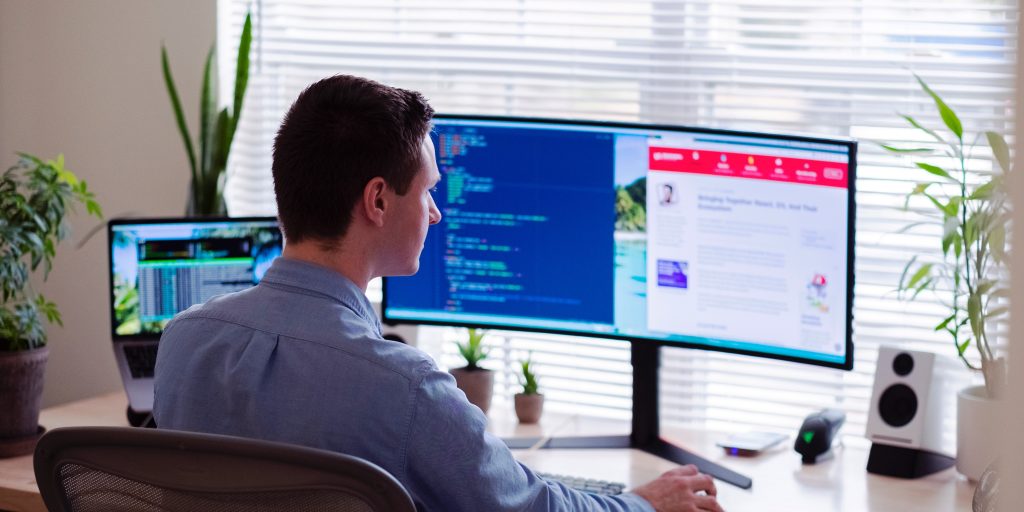The pandemic and the future of remote work for local government
Local governments and municipalities across the U.S. are facing an unprecedented need to shift employees to remote work due to the spread of COVID-19. Be it voluntary or mandated, many government organizations are seeing a high volume of internal and public-facing requests, which leave organizations left scrambling to determine what is next when it comes to working from home.
Although some agencies like the County of Los Angeles have piloted a remote work program as recent as the middle of last year, this is uncharted territory for most entities across the country, and many are now looking for the best solutions and practices on how to continue business as usual as offices transition to remote work for employees. So, how can local governments function in this new normal?
According to a recent American City & County survey, 61 percent of local municipalities allowing their employees to work from home, a plethora of tech platforms and tools are making it possible for government employees to transition to a work from home set-up for the first time. Although technology is an enabler for workforce productivity and mobile collaboration, it is important to get a sense for how this will drive the future of work. Here’s how some local governments are leveraging this time to put new processes in place.
Automating Work From Home Requests
In an effort to streamline the communications process, the records department at a Texas municipality is using Laserfiche to create a solution that enables department heads or elected officials to submit work from home requests for their staff. The solution includes an electronic form which the department head or official submits to kick off an automated process. If the member is “non-exempt,” the request is automatically routed to HR for approval and then to IT to verify that the request can indeed be fulfilled. If granted, IT will provide the necessary setup. If an employee is “exempt,” however, the HR step is bypassed. The automated process reduces the need for manual follow-up and enables the organization to keep track of requests and manage demand.
Even as guidelines evolve on a daily basis, having a process already in place and able to be revised as necessary will make the process easier to manage. As municipalities continue to decipher the best approach to handle work from home requests, it’s important to remember this is a learning process for all and there is no right or wrong way to handle this new way of life.
Paper Is Keeping Workers From Home
Paper filing and paper requests via mail are two of the main things currently holding many local governments back from implementing a full work from home option. Paper processes, however, require government employees to physically handle paper from the public either in person or via the mail, putting front line workers at risk for the social contact that can lead to COVID-19 exposure.
To comply with CDC guidelines on social distancing, one U.S. tribal nation is completely digitizing paper records across multiple departments. This particular IT department has now completed an electronic signing approval process on the Laserfiche platform that allows the tribal chairman to approve letters of support or endorsement to sign. The forms then go through a digital approval process in which the chairman can review and approve said letter via an online platform. The process has saved time and allows the tribal chairman the ability to sign documents through the press of a button rather than making unnecessary — and potentially risky — trips to the office.
Remote Work and Accessing Documents
American City & County’s survey also found that 49 percent of local municipalities are now advising employees to work from home in an effort to mitigate community spread of COVID-19. While teams at some government agencies are struggling to wrap their heads around new policies that are issued as often as every few hours, others are fully embracing technology to help them address this unprecedented public health emergency.
Countless cities across the country are doing everything possible to ensure public meetings are limited and allow employees to work remotely. Specifically, several cities across the state of Texas are changing their existing policies to allow employees to work from home and have access to the tools they need on a daily basis to get their jobs done.
As municipalities recognize the current disruption and work hard to minimize the impact on service delivery, it’s important that platforms and tools can both enhance the citizen experience and workforce productivity. From enforcing work from home policies, to looking at ways to make meetings virtual and transparent, to determining how to access essential documents, to streamlining processes, these are just a few of the things governments are working tirelessly to perfect.
As we continue to grapple with this health crisis, it’s critical for governments to consider security concerns as teams and workflows connect across different departments and asses how existing technology solutions can enable a collaborative and secure way to keep business moving.
Ryan Park is the state and local government marketing manager at Laserfiche.



















Local Government